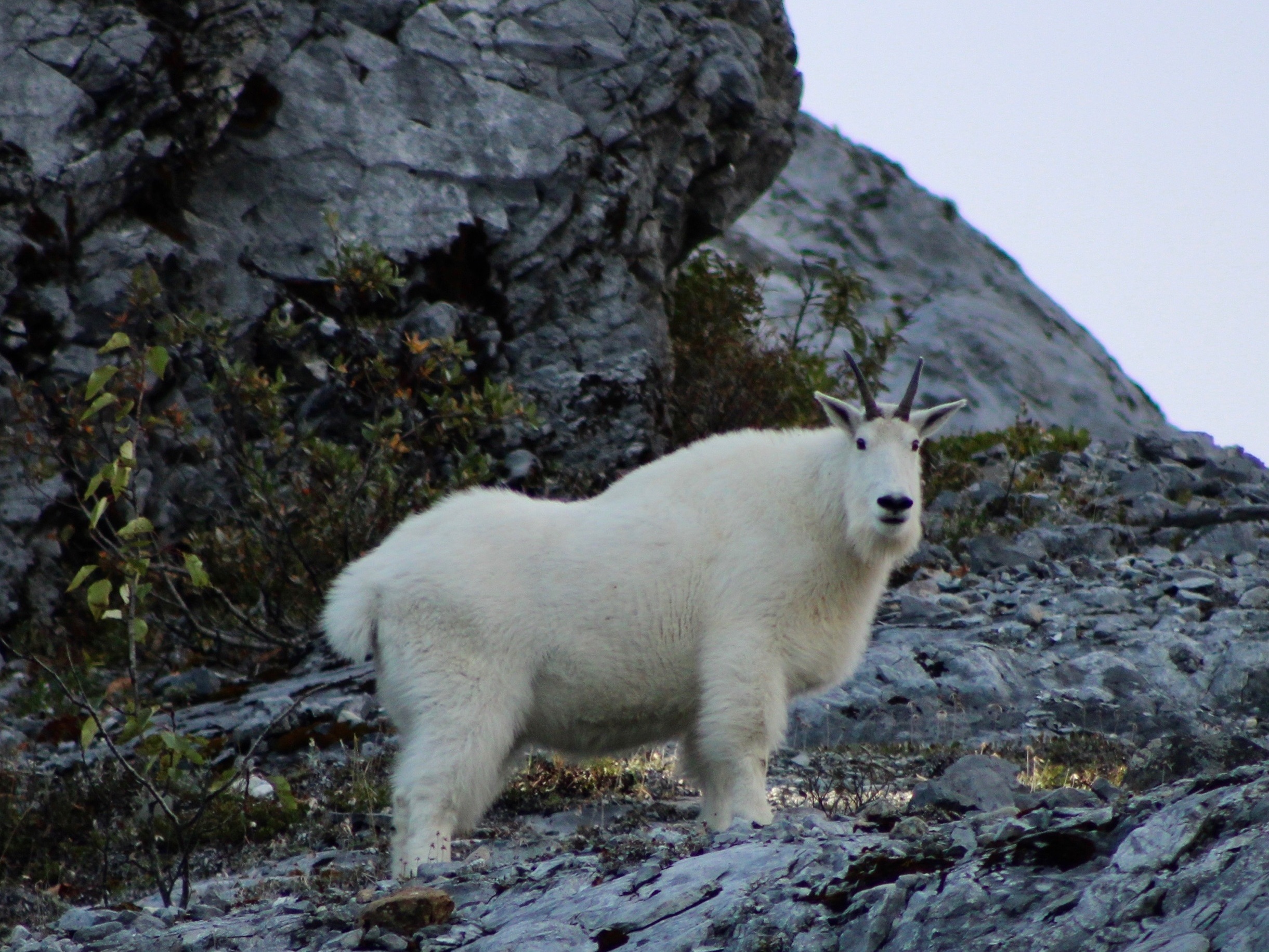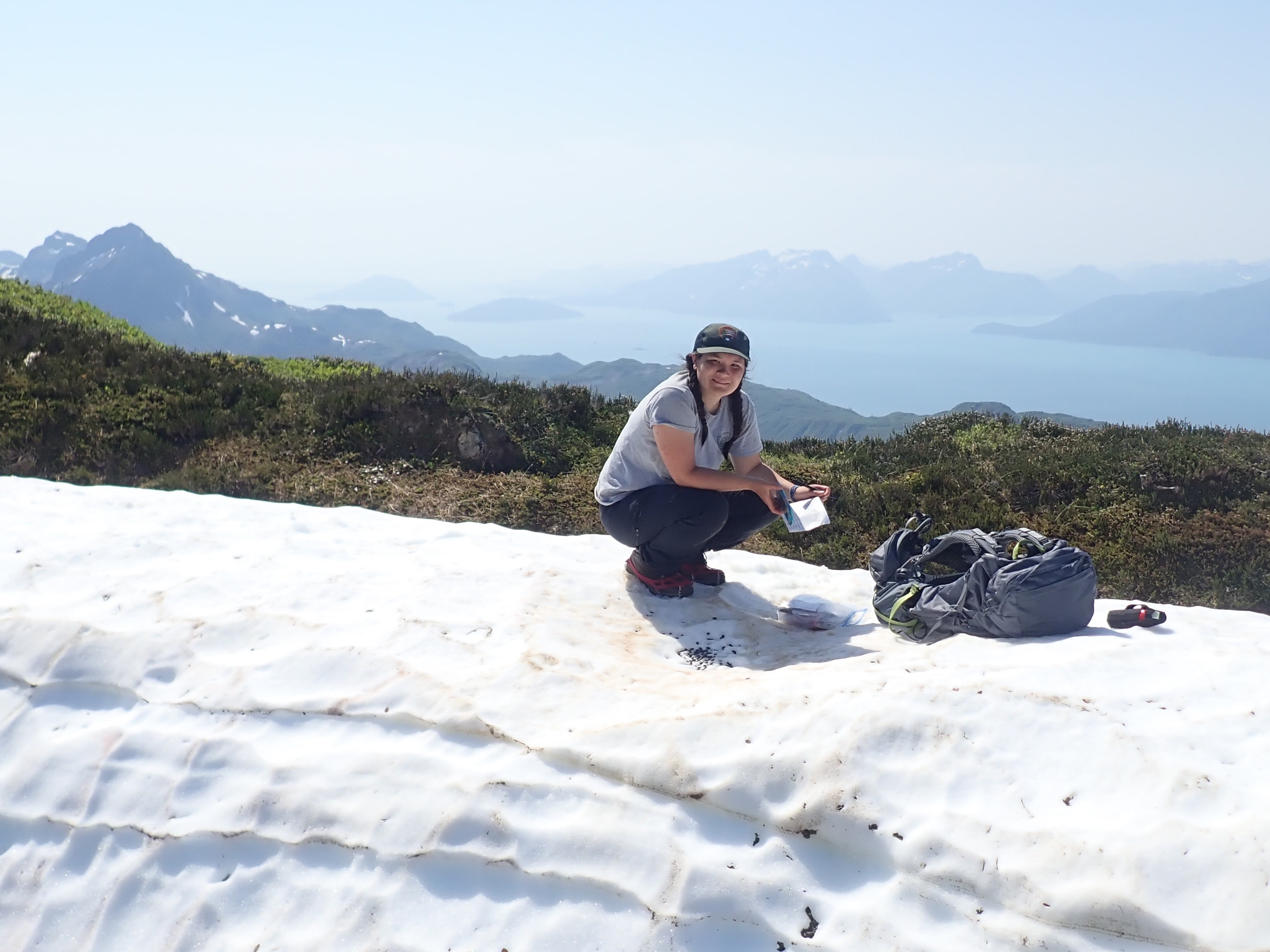
Mountain goat on Gloomy Knob, Glacier Bay National Park. D. Culp/NPS photo.
Small, isolated populations of wildlife often face issues with reduced genetic diversity such as decreased disease resistance, reduced potential for individuals to respond to environmental changes, and an increased likelihood of extinction. These issues are especially of concern for mountain goats because they are highly adapted to high-elevation, mountainous habitat with limited movement between alpine areas. Deep valleys or bodies of water that are easily crossed by other terrestrial megafauna may act as barriers to mountain goat movement and can isolate populations from each other. Mountain goats are also susceptible to disturbance from air- and land-based recreation, hunting pressure, and changes in their environment due to climate change.
A new study was initiated this year to describe the genetic population structure of mountain goats in key areas of Glacier Bay National Park and Klondike Gold Rush National Historical Park. Recent aerial surveys in both parks showed a decline in mountain goat numbers in specific regions. With both parks planning to update their Backcountry Management Plans, there is interest in determining the genetic population size and structure to identify potentially vulnerable populations of mountain goats at each site.
During the summer of 2019, we collected pellet samples (a.k.a. goat poop) in both parks by observing goats from a distance, waiting until they moved out of the area, and then swabbing fresh pellets and storing the swabs in a buffer solution. In total, we collected 191 samples. We focused on three main study sites in Glacier Bay, collecting 66 samples from Gloomy Knob/Tidal Inlet, 46 samples from Mount Wright, 48 samples from Marble Mountain, and 8 other opportunistic samples. We also traveled to Klondike Gold Rush for a week and collected 23 samples within and around the park with the help of staff. Next summer, we will continue collecting samples from both parks.

NPS biological technician and graduate student Kiana Young collects fecal samples from mountain goat pellets on a mountain in Tidal Inlet, Glacier Bay National Park. T. Lewis/NPS Photo.
This project is a collaboration between the National Park Service, Alaska Department of Fish & Game, and Trent University in Ontario, Canada. The samples are currently being genotyped by NPS biological technician/graduate student Kiana Young in Dr. Aaron Shafer’s lab at Trent University. DNA that is extracted from the pellet swabs at specific marker sites is amplified and then genotyped. Using the genotypes, we can separate the mountain goats into genetic clusters to determine the population structure and identify populations that are potentially vulnerable to disturbance. Data from corresponding aerial surveys will help estimate the size of each population. By knowing the population structure and size, we can appropriately make management decisions that minimize the negative impact on the goat populations.

A group of nannies, kids and yearling mountain goats on the top of Arctic Brotherhood (AB) Mountain near Klondike Gold Rush National Historical Park. D. Culp/NPS Photo.
For more information see https://www.nps.gov/articles/identifying-vulnerable-mountain-goat-populations.htm or contact Tania_Lewis@nps.gov
